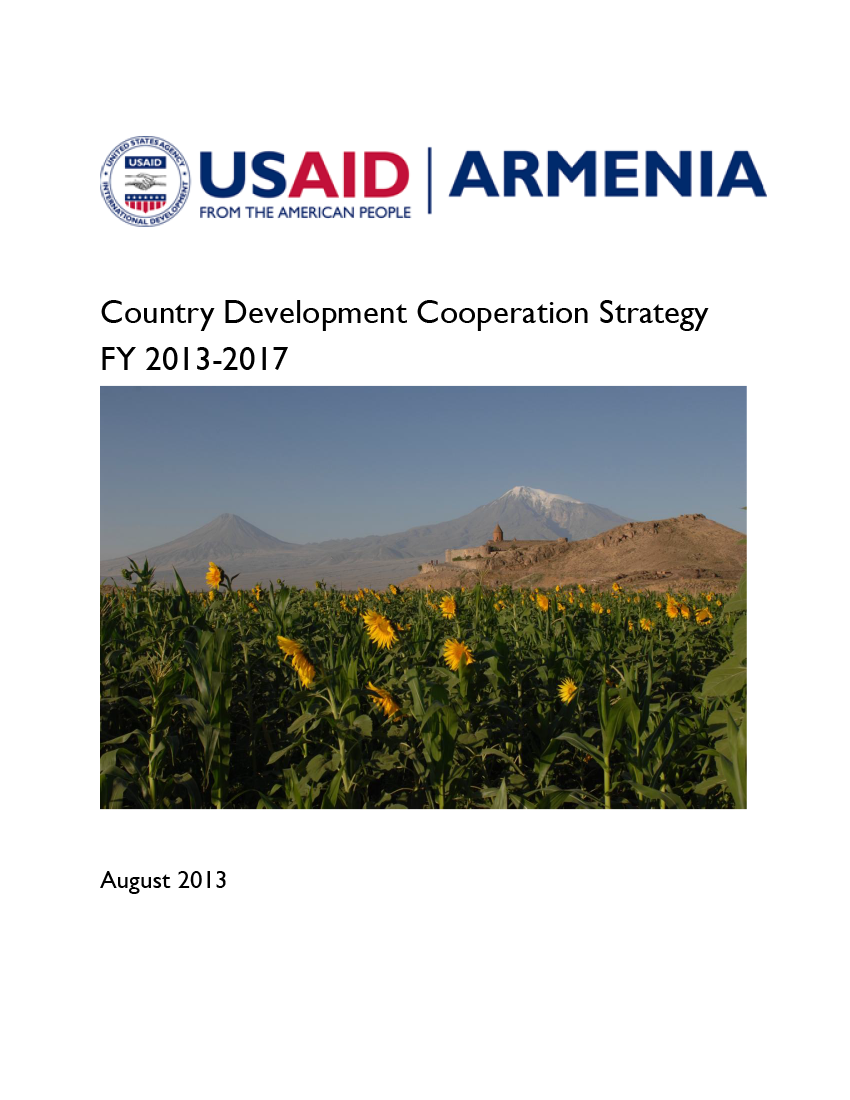Over twenty years on since independence, Armenia in 2013 has demonstrated its resilience and has made strides in its development yet it remains far from ready to “graduate” from assistance. Review of the key indicators of Armenia’s economic, democratic and social transition reveals progress, yet a mixed record on reform. Armenia presents a particularly challenging and unique development context because of its geopolitical constraints and unresolved conflict with Azerbaijan, its energy dependency, the influence of an engaged and diverse Diaspora, Russia’s dominance in major sectors, and the small size and population dynamics of the country. The result is a small, close-knit society where Western ideas compete with an Eastern legacy and where:
- A concentration of power among ruling elites constrains economic and political competition and impedes the pace and progress of reform.
- Poverty and unemployment rates have worsened, society is disillusioned, and groups such as the poor, women, youth, rural communities, the elderly and the disabled are marginalized.
- Dynamics such as outmigration and remittances serve as “escape valves” for pressure that would build leading to reform.
In response to these challenges, the Mission has developed a more focused and opportunistic strategy built on extensive evidence-based analysis that is designed to result in a more engaged, prosperous and well-governed Armenian society. Our vision for Armenia in 2017 is:
- A country considered one of the World Bank’s best Doing Business reformers with a competitive and diversified economy that provides productive opportunities for the emergence of a middle class that contributes to the tax base which will fund Armenia’s future development.
- A government in which power is more evenly distributed, governance is responsive to citizens’ concerns, more democratic governance has taken hold especially at the local level, and the incidence and perception of corruption are declining.
- Media and civil society are more independent and sustainable.
- Poverty, malnutrition and communicable disease are on the decline.
To bring about these results, the Mission will pursue two Development Objectives and one Special Objective:
Development Objective 1 (DO 1): More inclusive and sustainable economic growth
USAID will work to increase broad-based economic growth that generates productive employment and promotes equality of opportunity that can be sustained over the long term. To achieve this, the Mission will strengthen a diversified mix of competitive industries and level the playing field for increased competition through improved economic governance. To sustain growth, the Mission will place special emphasis on developing a workforce able to lead competitive industries.
Development Objective 2 (DO 2): More participatory, effective, and accountable governance
Democracy and governance approaches will permeate the entire portfolio. Targeting areas where a consensus for reform has emerged between civil society and the government, the Mission will employ “learning by doing” approaches to reform implementation. The Mission will engage civil society and the media in the front end and the back end of reform as “advocates” and “watchdogs.”
The common threads running through both of the proposed Development Objectives are: governance – the fabric that allows citizens, civil society, and businesses to have a voice, participate in benefits, and hold decision-makers accountable; competition – an essential element to viable economic and democratic systems in which there is a competition of ideas and political powers within government and corruption-reducing efficiencies are enhanced; and “going local” – where poverty rates and marginalization are highest and opportunities for more democratic governance are greatest.
USAID/Armenia has a Special Objective for “quality and utilization of selected healthcare services improved in priority areas” to track discrete results and effectively phase out assistance to the sector. Consistent with the Global Health Initiative strategy, the Mission will focus resources on leaving legacies of USAID’s twenty years of investment and addressing outlying issues in three priority areas: maternal-child health, family planning, and multidrug resistant tuberculosis.
In line with the principles of USAID Forward and the agency’s policy directives, the proposed approach is strategically focused, highly selective in areas of intervention and builds on opportunities and comparative advantages. Where a sector has multiple donors engaging, USAID/Armenia will deploy its resources elsewhere. Where results have clearly been achieved and additional assistance is not likely to advance the development agenda, USAID will re-orient and focus its resources to areas of opportunity.
Where there is not strong evidence of domestic leadership or constituency for reform, or where traditional approaches are not progressing, the Mission will engage in a different way so that with a declining budget, lasting results can be achieved and enduring legacies created. USAID’s place is unique among the many donors to Armenia as a source of technical assistance in a variety of sectors as other major donors provide direct budget support. USAID/Armenia is a credible partner that enjoys high prestige and solid working relationships with the GOAM and a diversity of local actors that are critical to sustaining outcomes.
Envisioning the day when Armenia no longer requires assistance and can fund its own development, the Mission designed this strategy to intensify the use of partnerships that have the potential to outlive the Mission’s presence and constructively engage the Diaspora. By engaging more directly with the Government of Armenia and local change agents, USAID/Armenia will build local capacity to advocate for, implement and evaluate reform.









Comment
Make a general inquiry or suggest an improvement.